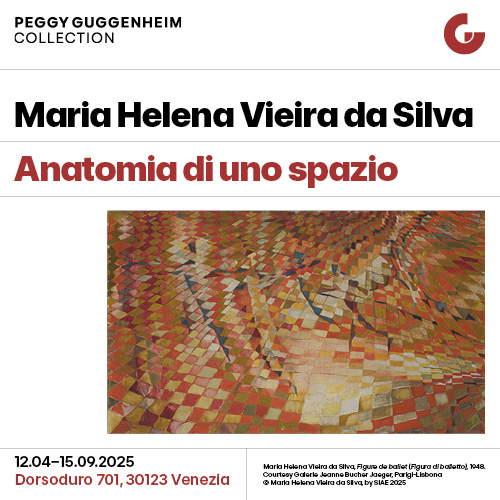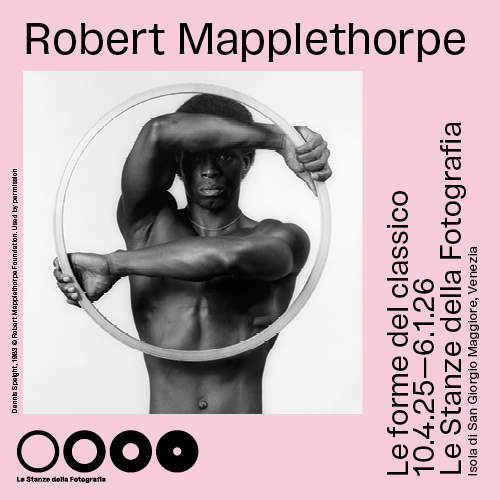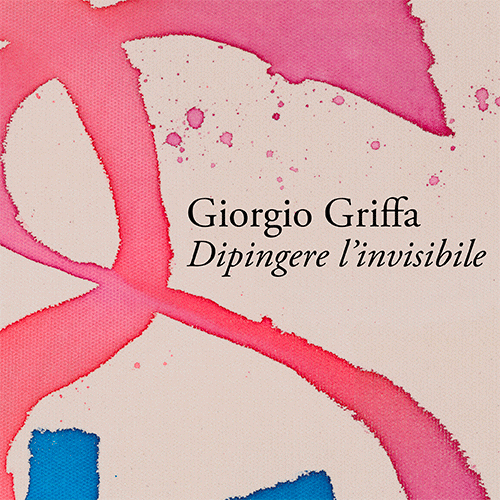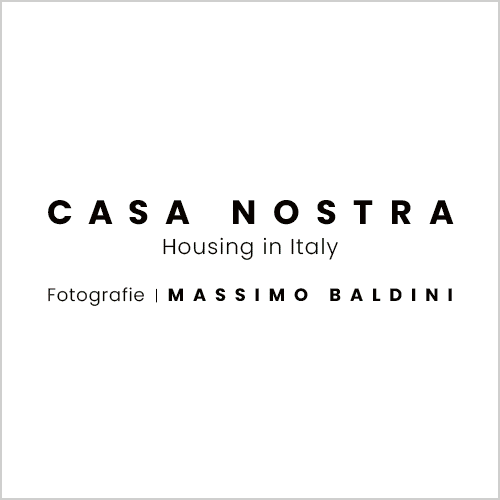Agnes Questionmark, if an artist manipulates the body by fusing flesh and technology. What the exhibition in Lucca looks like
“Mutation,” wrote Francesca Alfano Miglietti in the preface to Mutant Identities. From Fold to Plague: Beings of Contemporary Contaminations, Costa & Nolan, 1997, “is the anarchic dimension that does not recognize the linearity of a species evolution. It is self-mutation. The choice of identity subtracted from sex, race, religion.” This dizzying essay, considered a manifesto ofnomadic identity, identifies a new transdisciplinary constellation of artistic research united by an idea of the body in metamorphosis, a territory of exchange between natural and artificial, male and female, mechanical and biological. “In this scenario,” the author continues, “the body seems to have become one of the most important sites of the mutation taking place, a body mutated to the point of loss of memory of an archetype, both scientific and anthropological-cultural, a body as an ideal battleground between nature and culture, a hybrid body, the mutant flesh, interfaced organs, with microchips, displays, hardware technologies... a body that presents more and more analogies with the body-social in which it develops and mutates [...] The art of the mutation universe unfolds outside the constraints of cultural training, outside the serialized leveling of cultural industries, outside the regulations of official artistic communication. It is an art that already uses sampling, displacement, sampling, mixing, reuse. It is an art that acts the nomadic distribution of information floating in deterritorialized semiotic planes, it is an art that moves from messages to devices.” What at the turn of the 1990s seemed to be manifesting itself from many quarters as a new linguistic ubiquity on the verge of exploding was an art active in the manner of a virus, a code inoculable into a system (i.e., a cultural body) capable of modifying and altering its functioning. Guy Debord, William Burroughs, David Cronenberg, James G. Ballard, Vito Acconci, Gina Pane, Orlan, Gilbert & George, and Matthew Barney are some neuralgic authors of this line of research that, despite its sometimes dystopian aesthetics, harbored a secret faith in the positive value of connection as the propulsive agent of an anthropological revolution on the verge of subverting every sphere of life. Much of what those authors had imagined in hallucinatory and resounding form (neural networks, subcutaneous grafts of biometric markers, organs kept alive artificially outside the body, genetic decoding) has now become reality at the outcome of an increasingly capillary and invisible process of contamination between technology, human beings and nature.
Although the relationship between these three spheres is at the center of the research of several contemporary artists, few are those who have taken up the legacy (more relevant than ever) of those reflections in all their visionary mythopoetic complexity. If we think, for example, of artists such as Julia Phillips, June Crespo or, in Italy, Giulia Cenci, their sculptures refer to a hybrid and phantasmal posthuman presence through the sampling of industrial elements and the use of materials evocative of a biological sensuality, but their production does not take the form of a grand foundational narrative capable of proposing a hypothesis of the future potentially inscribed in a real body. While instead, other authors, such as Ed Atkins or Jon Rafman, hyperbolic creators of worlds in power comparable in scope to those of the aforementioned authors, shift the reflection to a virtual corporeality innervated with existentialism, which almost completely disregards the tangible reality of the body, sublimated in the dematerialized dimension of the network. On the other hand, the poetics of Agnes Questionmark (Rome, 1995), a young artist working between performance, sculpture, video and installation, whose career on the global scene is exceptional on several levels, especially with reference to the national scene, draws directly from this sphere. In fact, Agnes, at only 30 years old, can already boast of recognition normally precluded to her Italian peers, her creative story being studded with mentions at prestigious awards and exhibitions in authoritative venues abroad as well, such as the Centre d’Art Contemporain in Geneva, the König Galerie in Berlin, the fourteenth Gwangju Biennale and, more recently, the 60th Venice Art Biennale curated by Adriano Pedrosa, where his work Cyber-Teratology Operation (2024) was selected for funding from among the projects of more than 150 young emerging artists under 30 from 37 countries who applied in the second edition of the Biennale College Arte (2023/24) call for proposals. The work, which was included out of competition in the exhibition Stranieri Ovunque - Foreigners Everywhere, was emblematic of the artist’s ability to construct hybrid and integrated worlds from the technological manipulations of a trans body(trans-species, transgender, transhuman) that with its autarkic transformation challenges the normativity of patriarchal bipolitics and medical-scientific control.
Central, in that work as in the artist’s entire oeuvre, is scientific and medical experimentation centered on practices, such as robotic surgery and transcorporeality, designed to reshape the understanding of the term “human” in a futurist key that compels the viewer to reflect on his or her present condition. Agnes Questionmark’s practice has already reached such a level of maturity and coherence, in terms of both form and content, that it is unparalleled in the national context, where these issues are still little addressed and never with such an informed and articulate approach, even in the long term. Of the line of research identified in the opening, the artist transposes the suggestions, the anxieties and the ability to think big, without worrying about the “right size” and without trying to stick to that rarefied and conceptual aesthetic that usually distinguishes artistic production focused on the post-human. As the first-person protagonist of her sculptural and video installations, she began to elaborate her own speculative fabula from her fluid and metamorphic identity as a transgender subject. Her work draws from the same polymorphic aesthetic realm as Matthew Barney, an artist to whom she has often been juxtaposed, but focuses her research, like the most extreme performers of the glorious period of Body Art, primarily Orlan, on a real and profound manipulation of the body, which in her case is the starting point and not a spectacular performative climax.
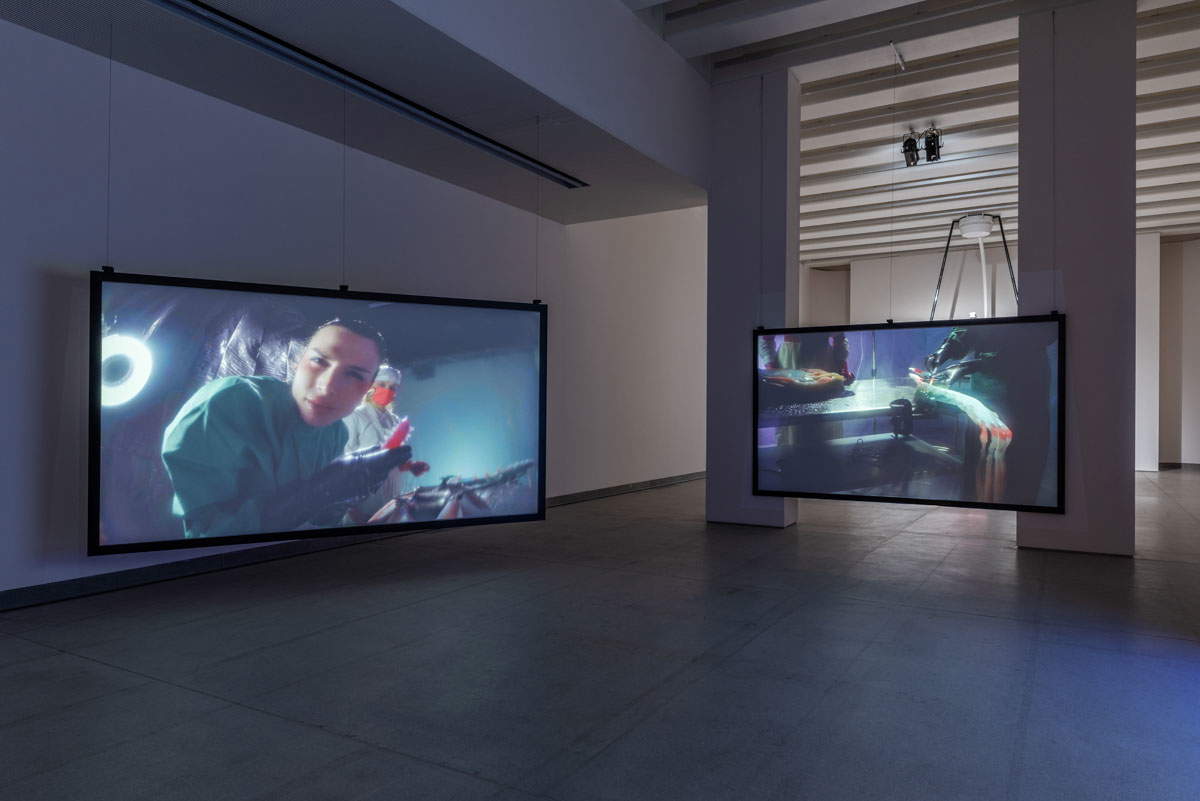
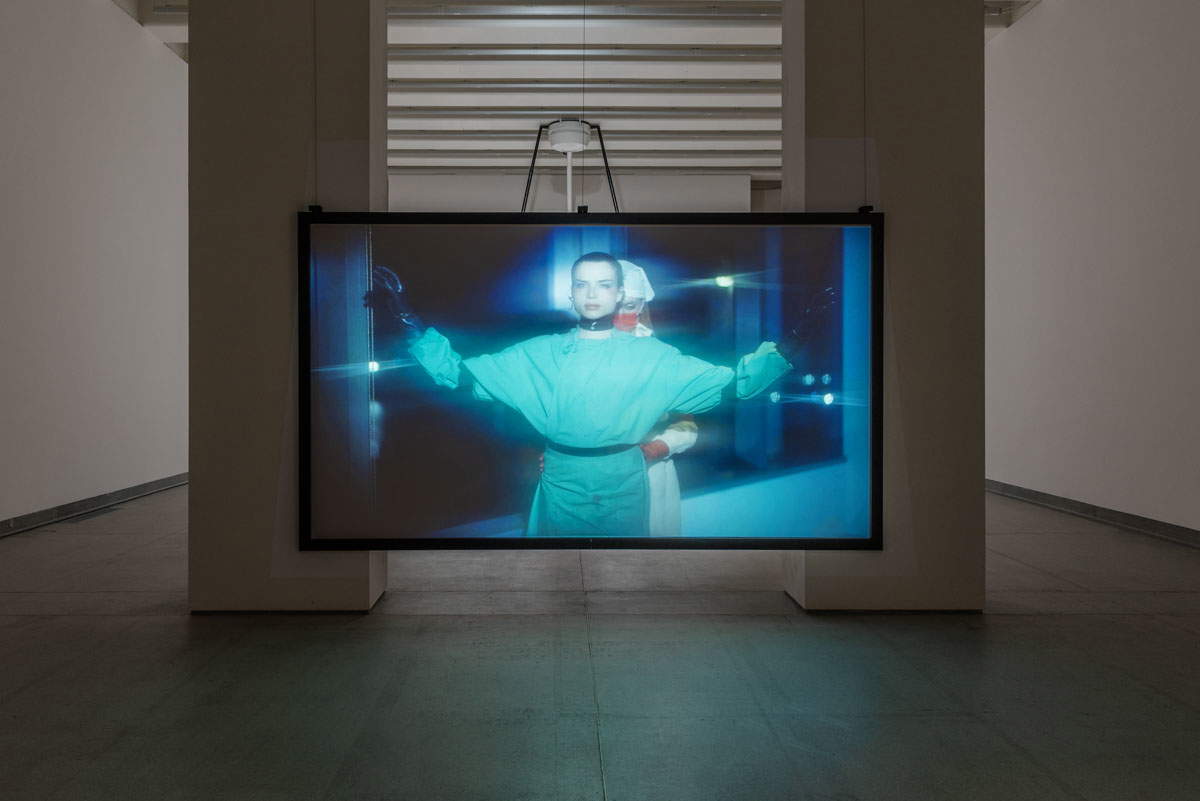
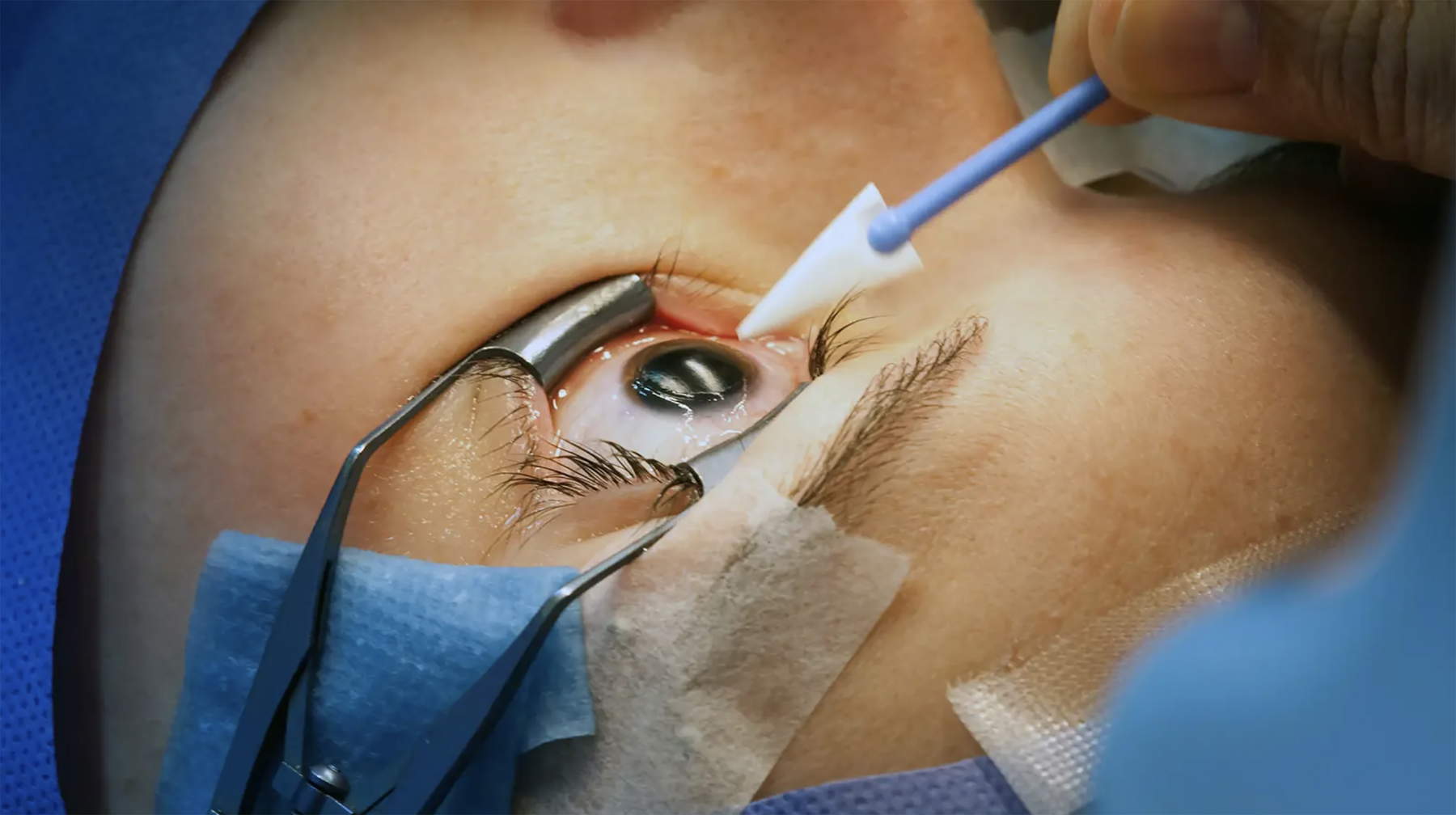
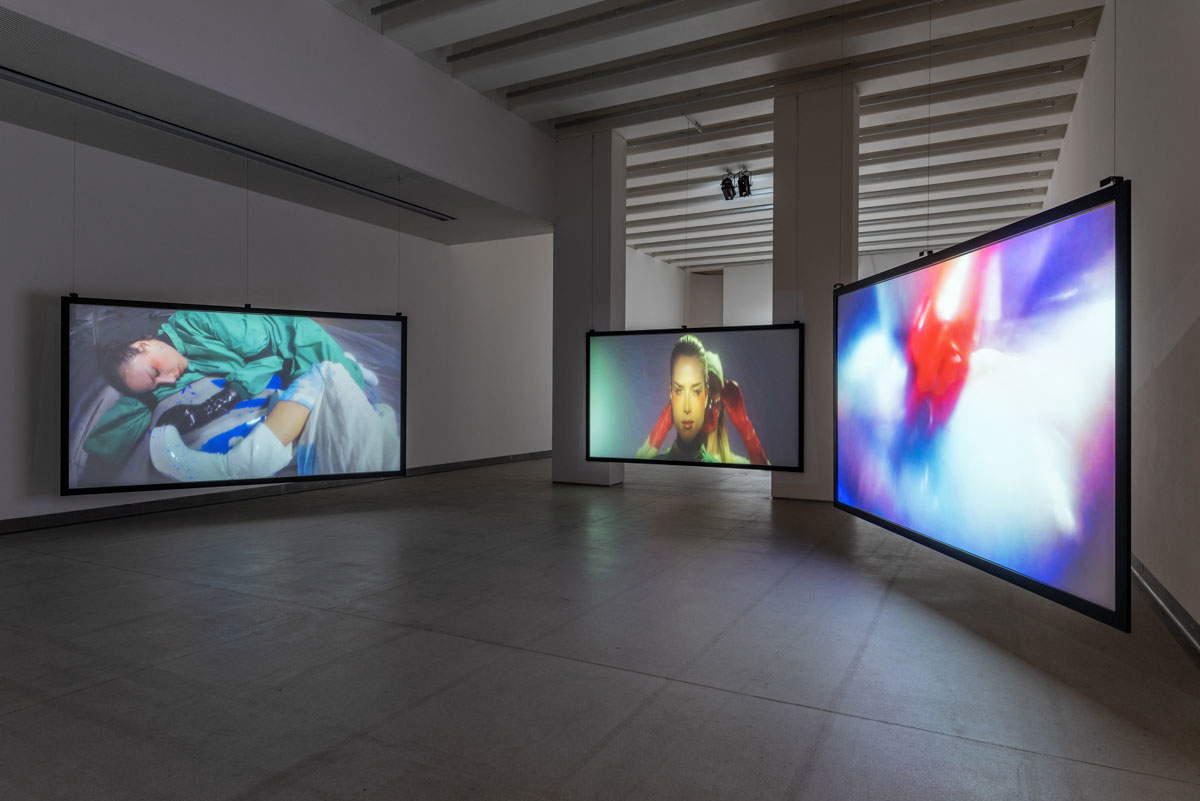
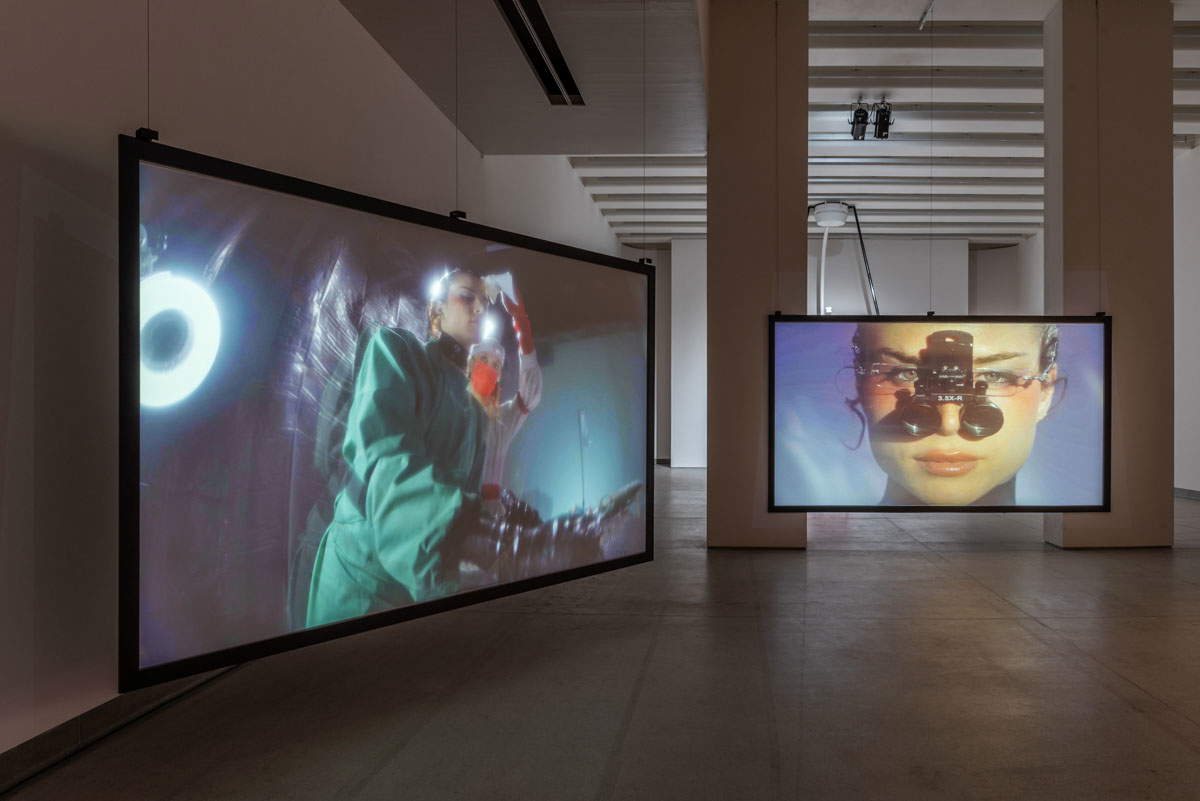
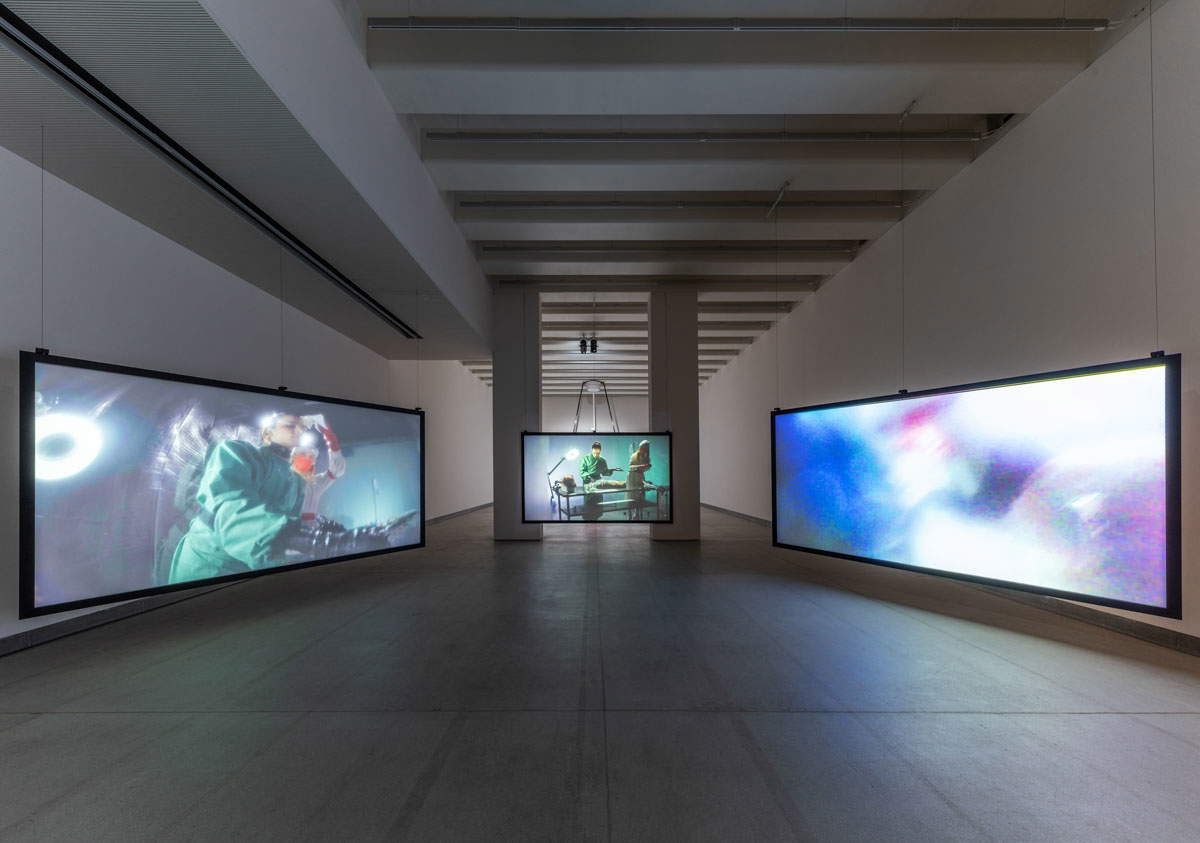
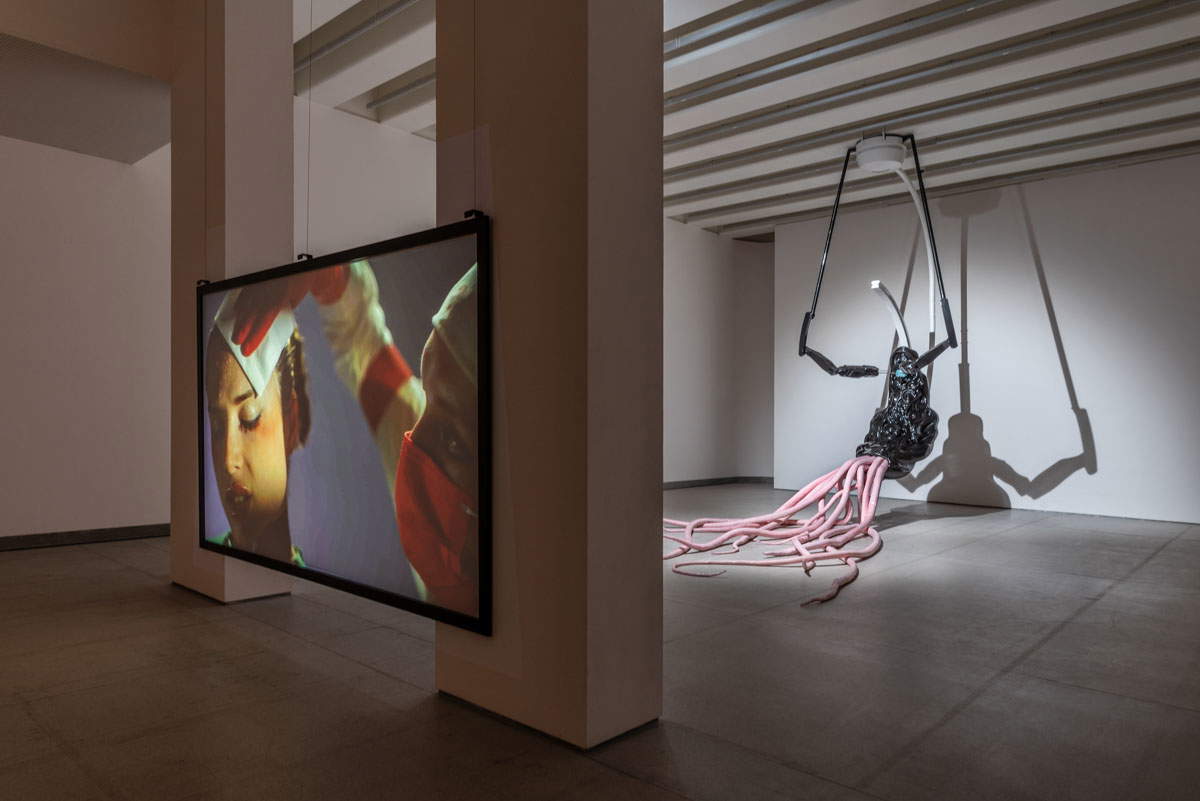
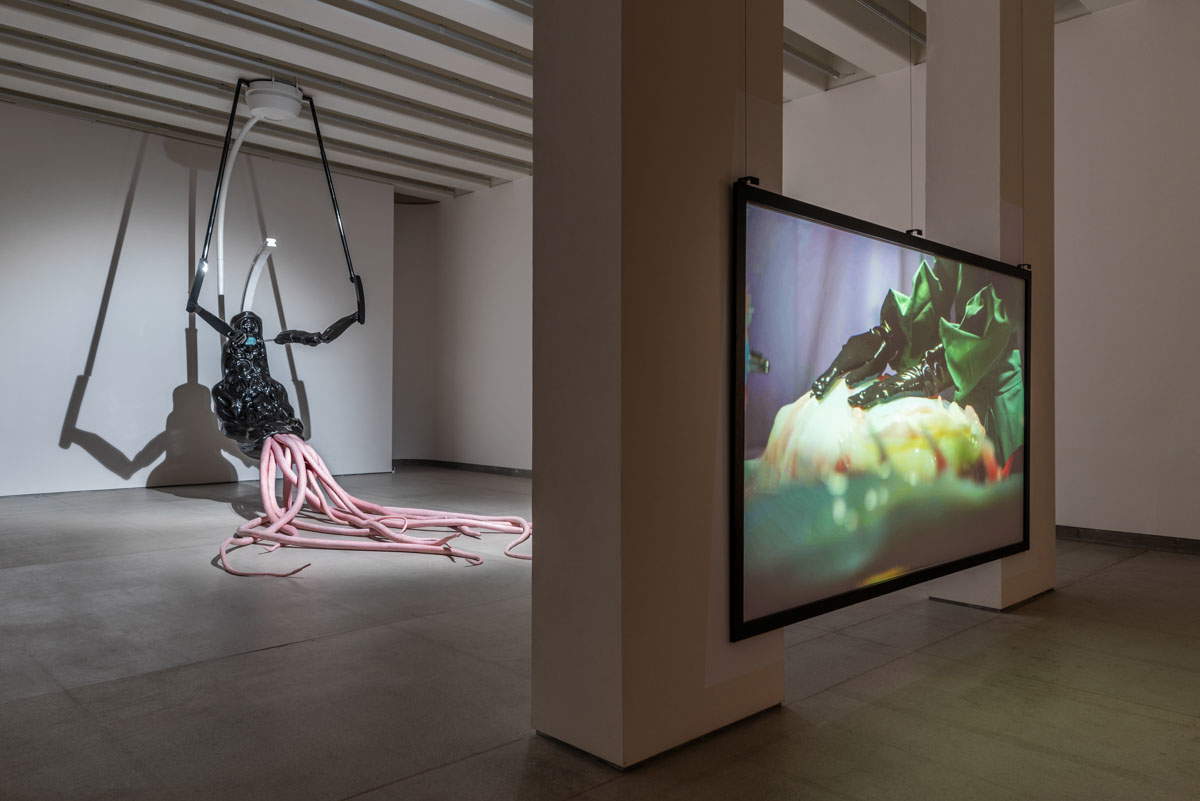
The need to consider herself scientifically and medically in order to be able to make autonomous choices in her individual process of transition, even at the cost of bordering on legality, and to escape the forcings of the Italian health care system, has led her to traverse in depth a plurality of territories normally removed from the official information system, testing its implications first on her skin and then in her work. Precisely for this reason, a limitation to the circulation of her work is the difficulty of finding a suitable exhibition context (given also the ambitiousness of the realization of her projects) and an audience willing to reflect, beyond abused narratives and aesthetics, on such disturbing themes as those she deals with. Therefore, it constitutes an unmissable opportunity to get in touch with her poetics the solo exhibition Nexaris Suite curated by Angel Moya Garcia at the Tenuta dello Scompiglio di Vorno (Capannori, Lucca), a precious and visionary incubator of contemporary artistic research directed by director and artist Cecilia Bertoni in the pleasant hills just outside Lucca, where the farm of the same name and the cultural association are based. Entering the underground room dedicated to temporary exhibitions, the visitor finds himself catapulted into an ambiguous automated surgical room, recreated by three room-sized video screens, in which a mysterious operation is being performed by two pseudo-medical figures (one is Agnes herself) on a vaguely anthropomorphic biological entity. The three screens refer, with a slight chronological displacement that increases the estrangement, to three different perspectives of the operation in which suggestions of the most advanced diagnostic techniques, such as magnetic resonance imaging and mobile X-ray scanning, and an impeccable cinematic aesthetic winking at the science fiction genre are merged. This is Opera Medica (2024), a hypnotic video installation that brings into play all the crucial components of the artist’s practice, such as the fascination with alien species and scientific analysis, the investigation of the limits of the human body and the aporias inherent in its translation into computer code, the theme of health surveillance perceived as violence, and a kind of cult of tentacularity risen to a theoretical approach and a tool of critique against the capitalist anthropocene.
If the convergence of footage generates not the omniscient and unified vision one would expect, but the evaporating of consciousness into a multiplicity of sentient streams, many and destabilizing are the questions and insights provoked by this fragmentation. First, the fact that it is only through technology (in this case medical) that we are able to see and understand ourselves from within seems to attest, taking to extremes the loss of the aura that Walter Benjamin spoke of in relation to art, to a supervening lack of authenticity of the body in its technological reproduction, an aspect that brings out the normative and vulnerable nature of the concept of humanity. The one imagined by Agnes Questionmark is a multiple body, a crucible of the fusion of flesh and technology, an anarchic and deviant manifestation of a new aesthetic phenomenology capable of redesigning the idea of subjectivity in symbiosis with that of mutation and of reinventing political structures on the basis of new technological relations of biopower. In the images by which the viewer is surrounded in the installation converge the gaze of a hypothetical observer inside the surgical laboratory, detailed footage of the patient’s organs and internal tissues (beautiful excerpts of soft abstract video art), and the blurred vision of that same subject, who in the state of semi-consciousness induced by anesthesia peers down at her curator-carnages.
Suddenly, the order of things is subverted and from a gash in the body lying on the operating table, an unexpected pink tentacle escapes along with an unspecified liquid, an event that wreaks havoc in the operating room and instigates by some unknown subliminal input the surgeon and her assistant to strangle each other. The theme of the gaze and the semantics of the sprawling being return in Nexaris (2024), an imposing sculpture in acrylic resin, silicone and iron that we find in the second part of the exhibition, of which it is the hardware complement. The work recalls an eerie suspended idol, from whose roughly human cocoon-like body tender, slimy flesh-colored tentacles emerge. The overall form derives, in addition to the aforementioned biological impressions, from that of the eponymous multimodalimaging apparatus produced by Siemens and used in the medical field to monitor the entire clinical course of patients while minimizing invasiveness.
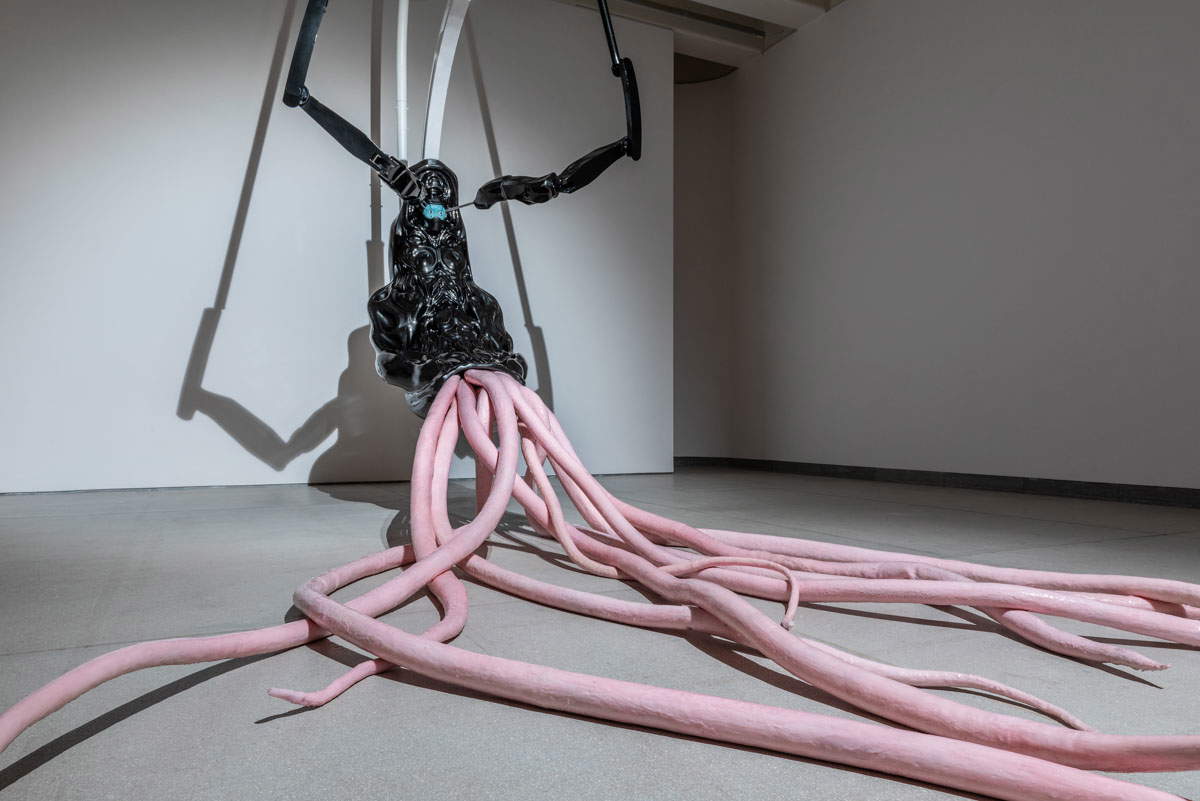
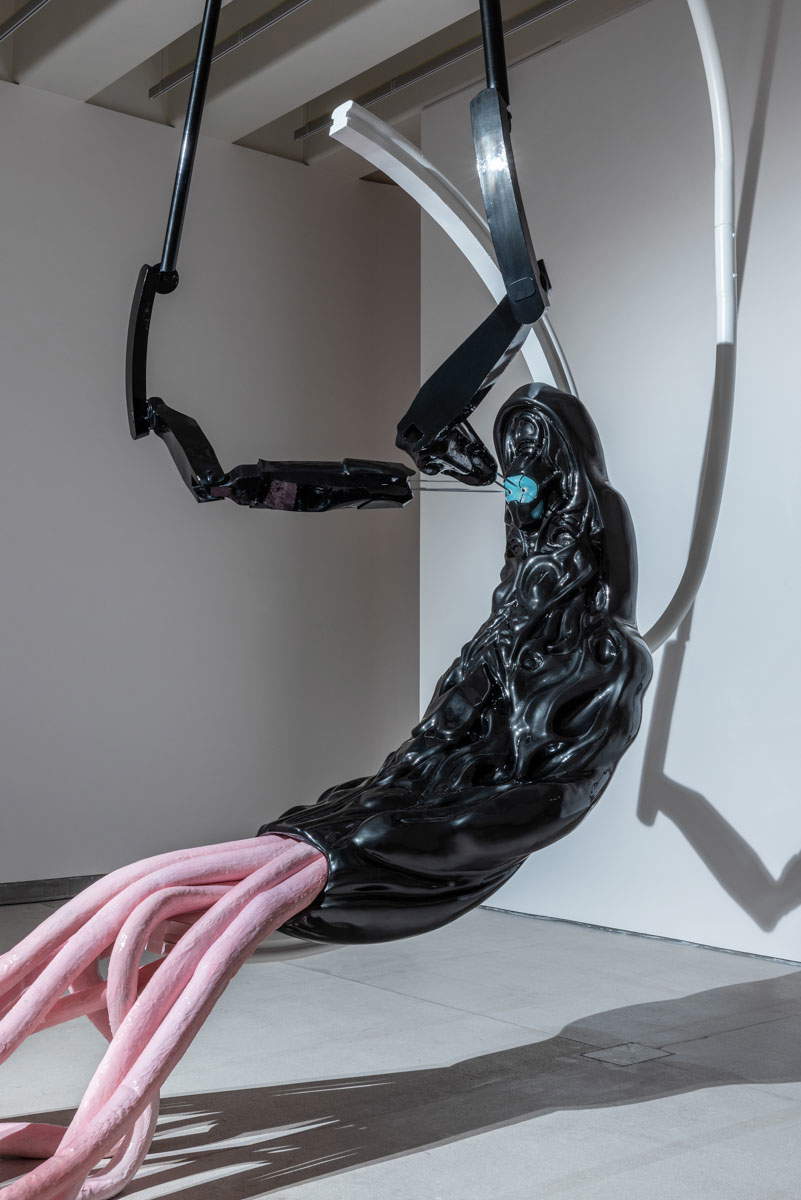
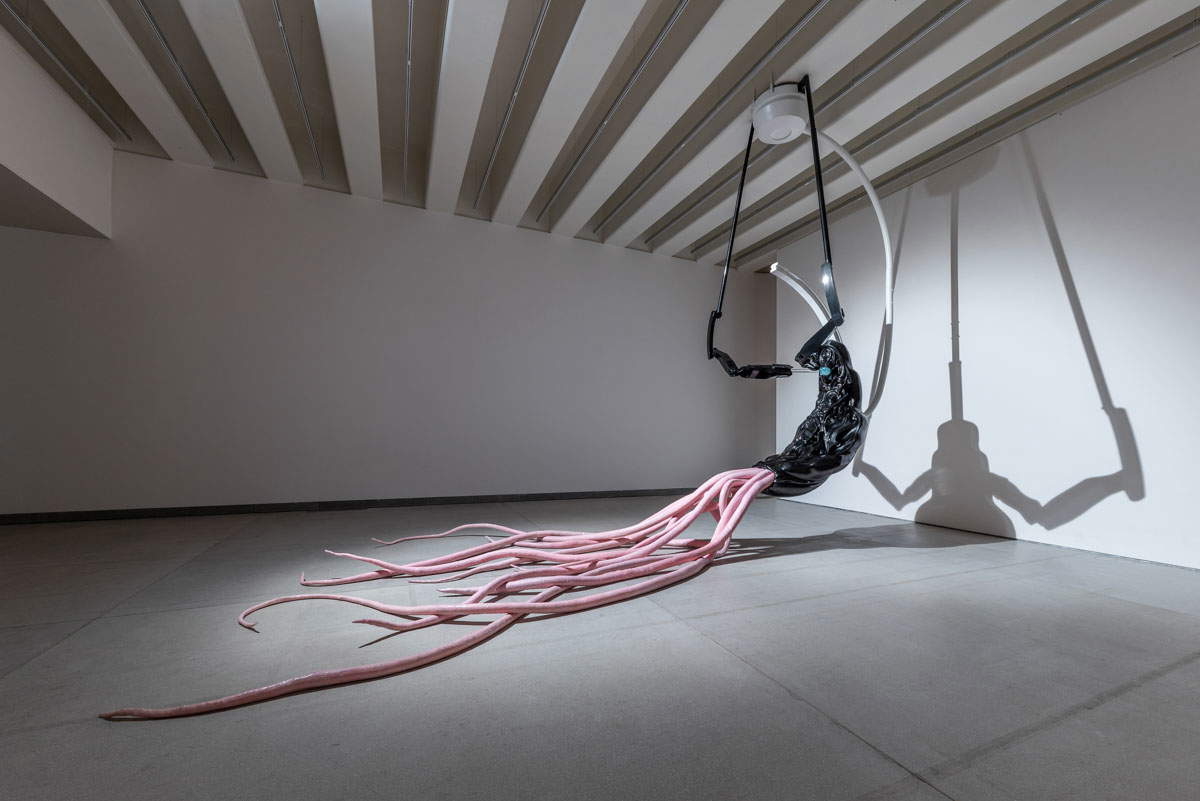
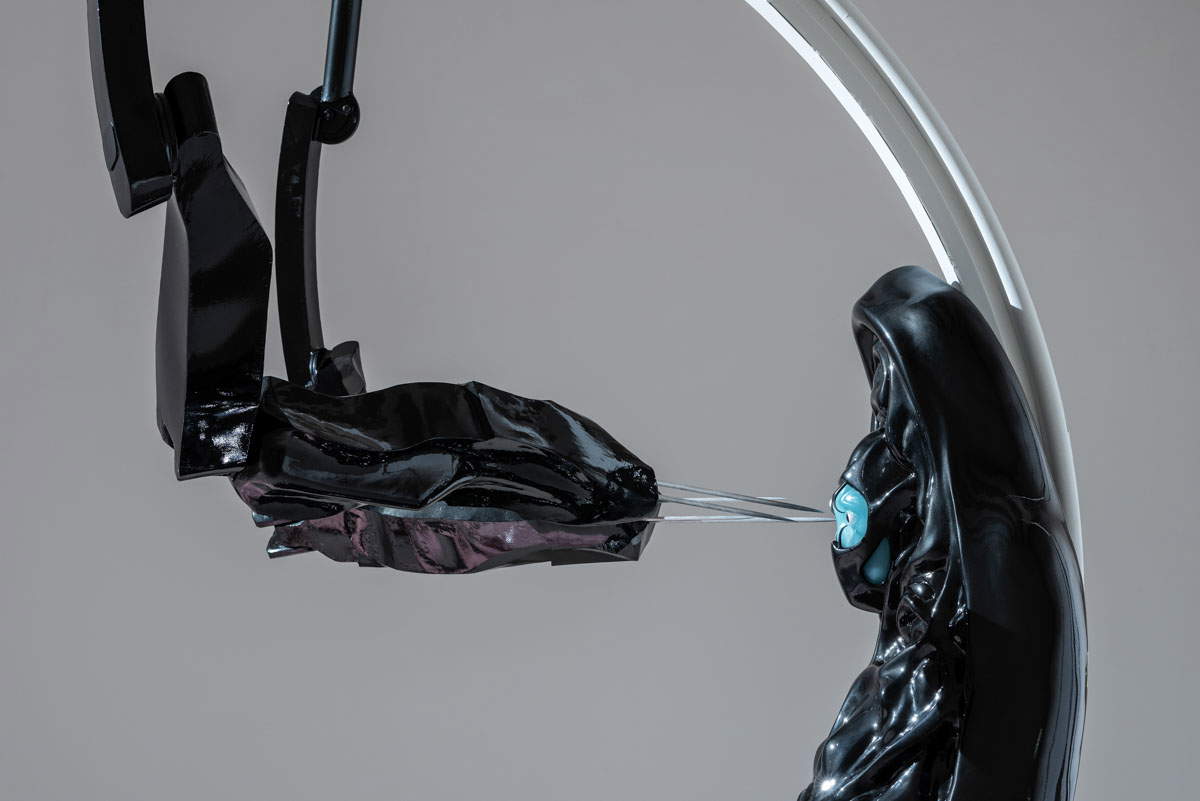
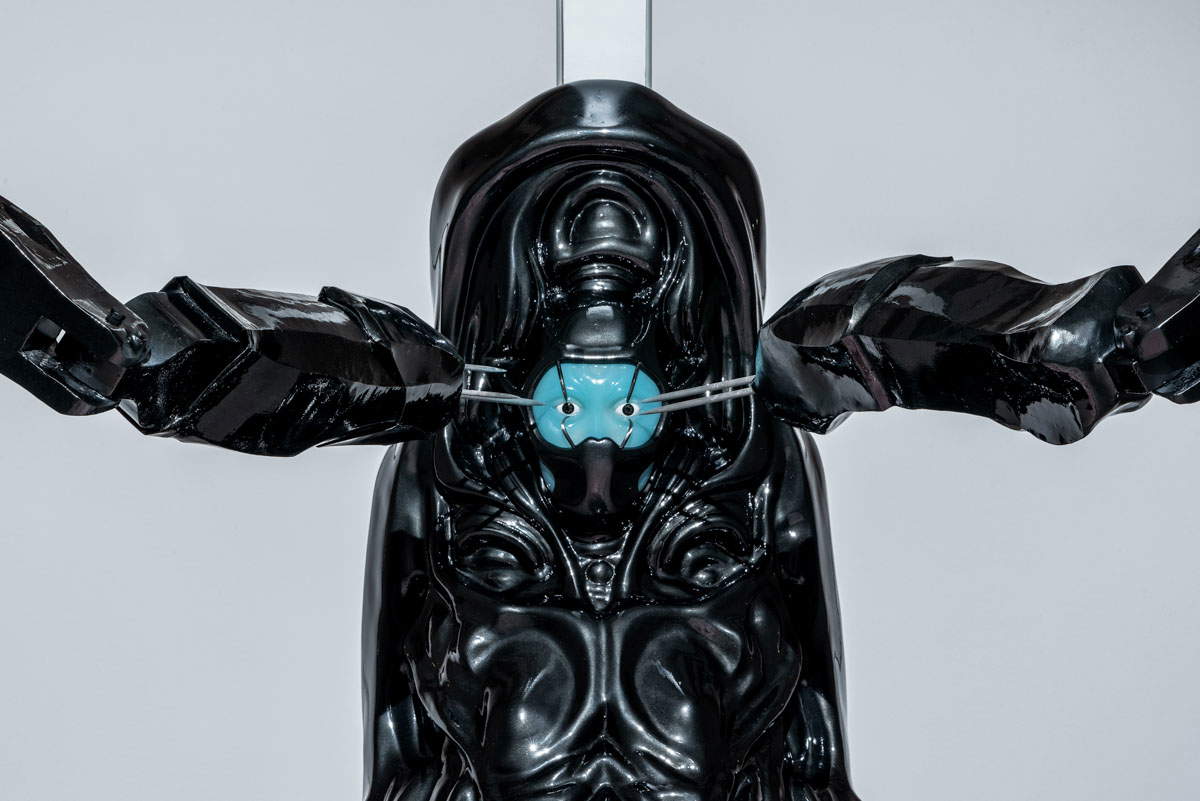
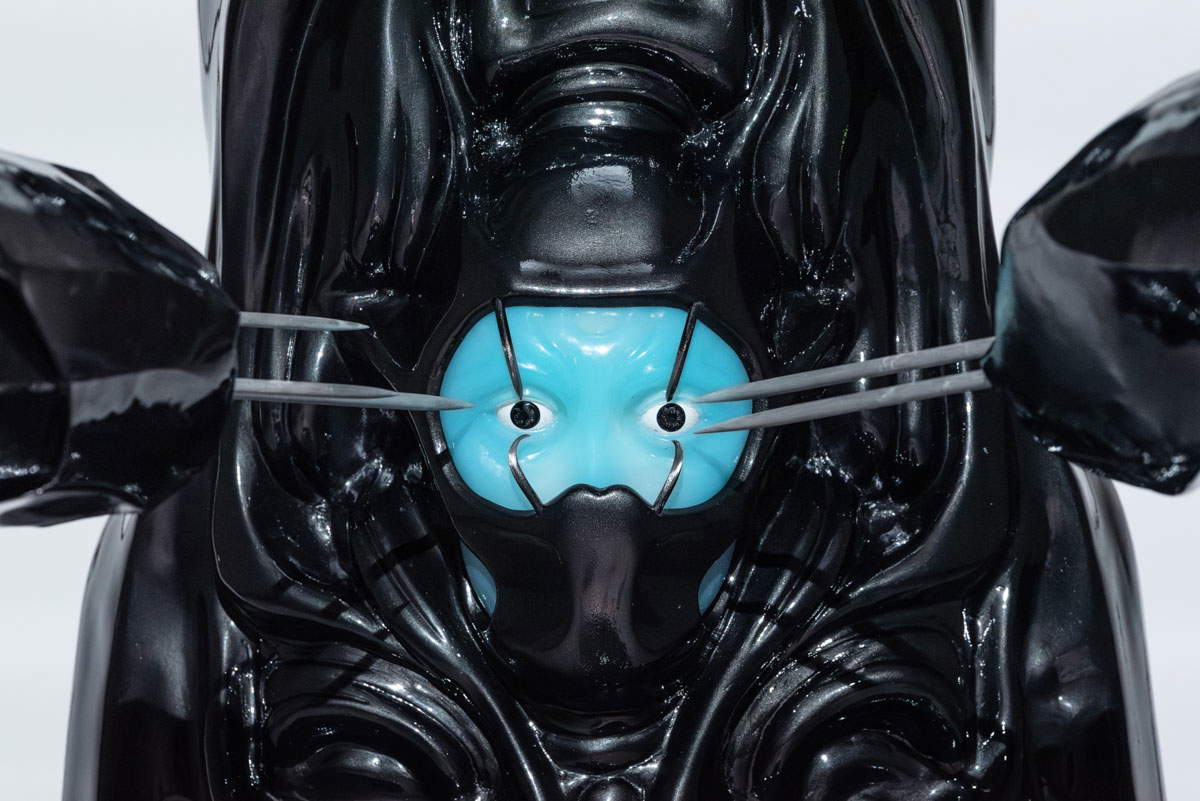
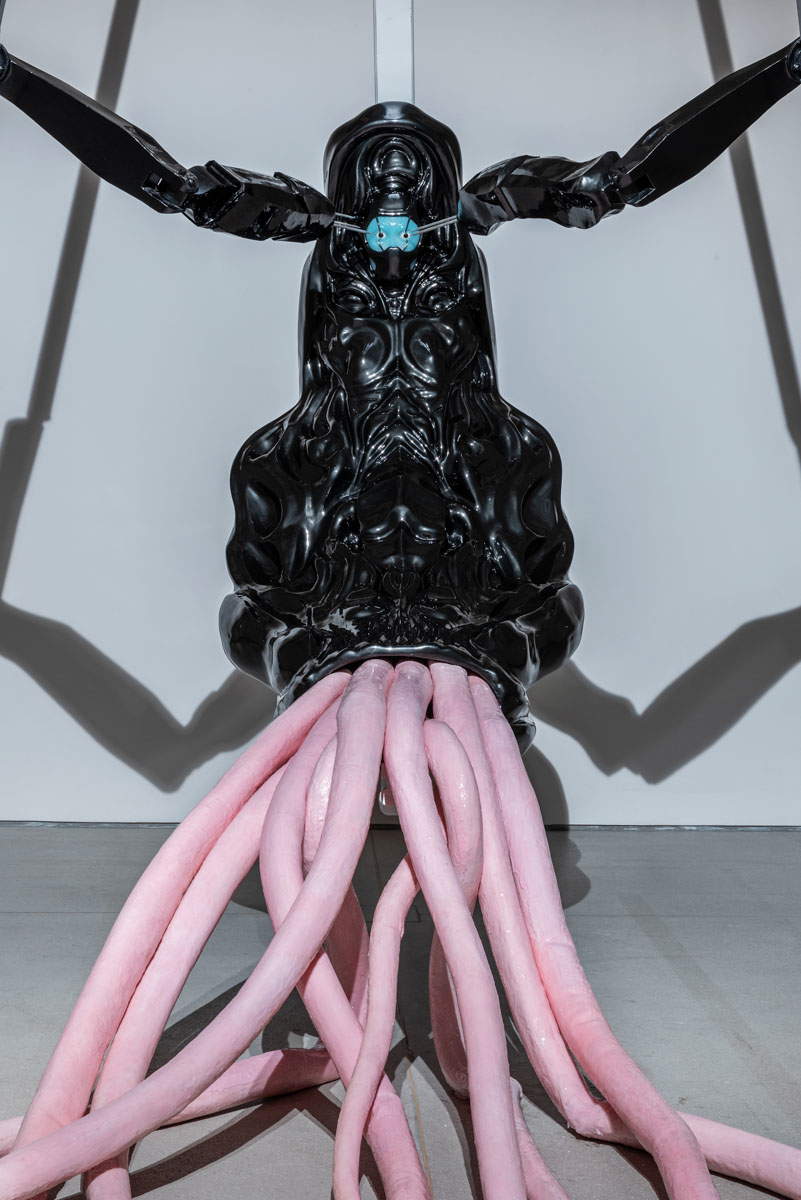
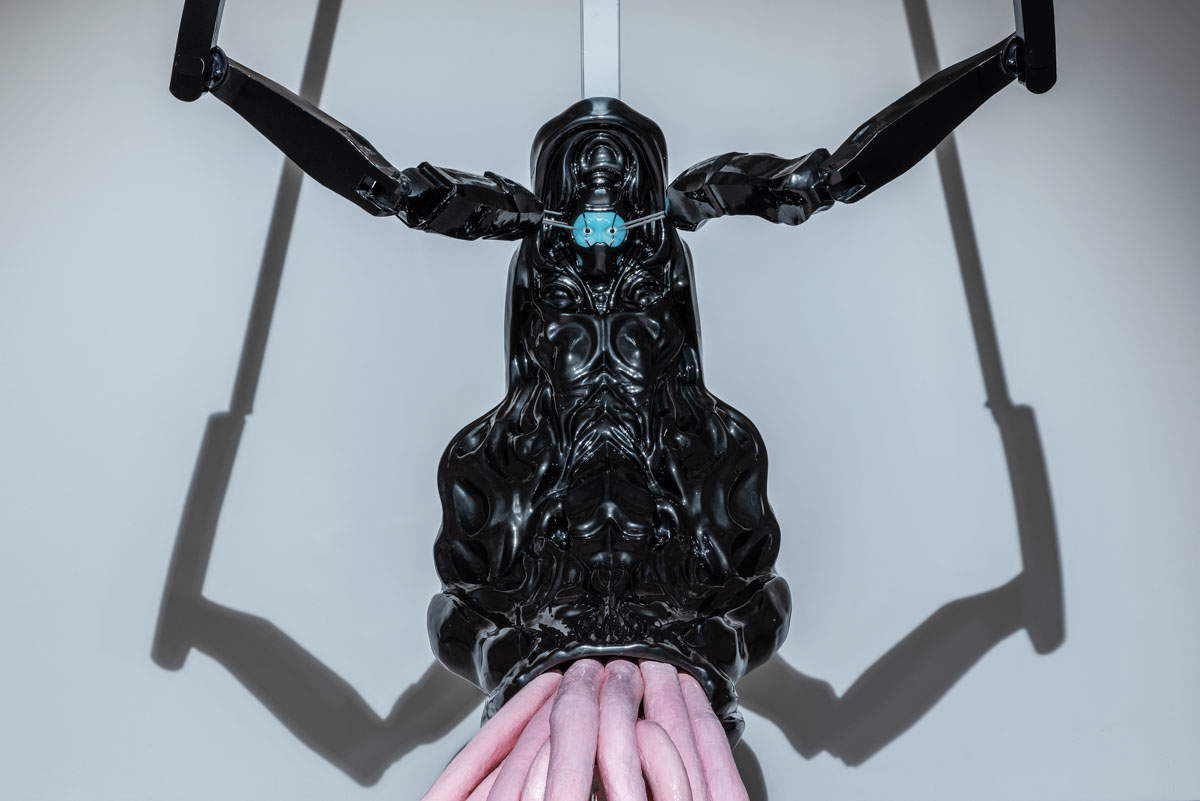
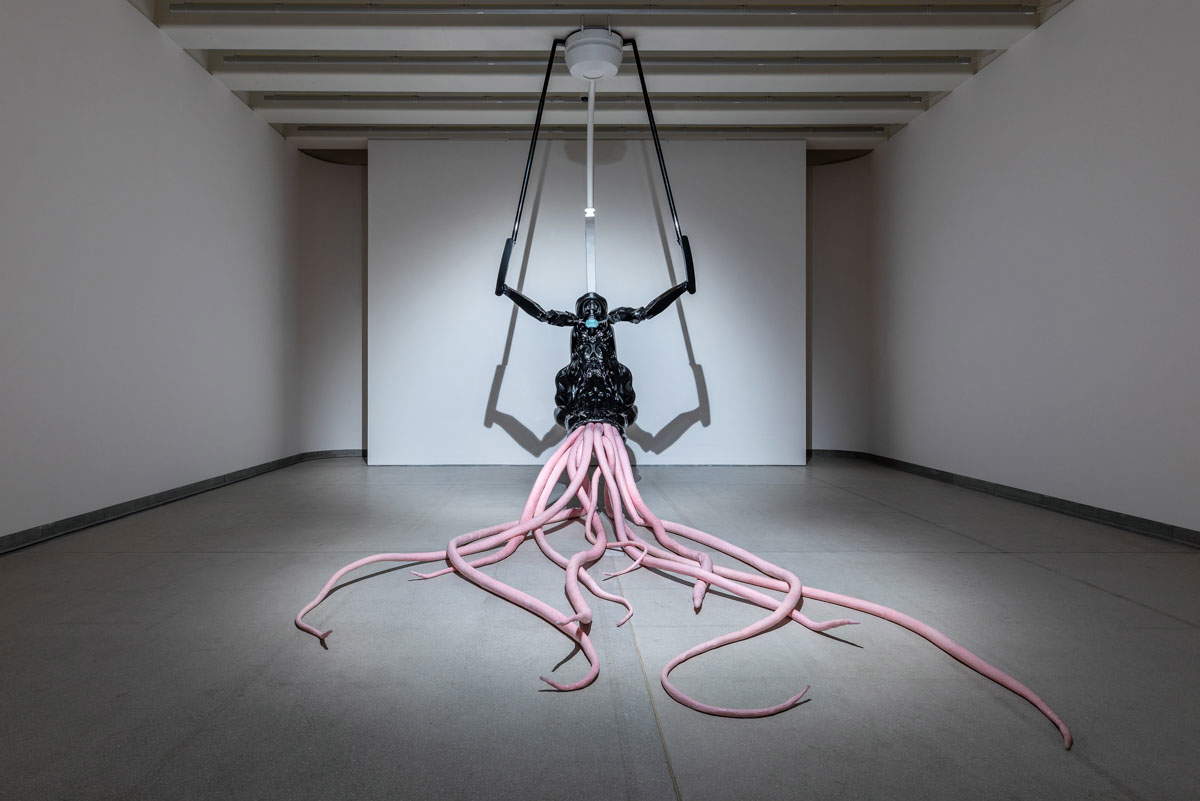
If relations of domination between patient and doctor are based on the primacy of the gaze that the latter acquires through technological prostheses, what happens when the object of the intervention is precisely, as in this case, the eyes? And again, if the self and the device can become one through a symbiotic relationship, how are our concepts of life and identity consequently transformed in light of the latest scientific discoveries? The answer between the lines is to try to work out new systems of multi-species coexistence to allow complexity to exist, in the wake of reflections nurtured by reading Michel Foucault, Donna Haraway, Karen Barad, Rosi Braidotti, Helen Hester and Paul B. Preciado. If the artist seems to embrace the theories ofHarawayan intersectionalism, which sees the contamination of technology, genres and nature as the only mutation capable of enabling our future survival, in her artistic imagination such fusion is embodied in thehybridization between the octopus and the human being.
This graft in his research appears beginning with the long-duration performance (84 hours over the course of 23 consecutive days: eight hours a day) titled Transgenesis and carried out in 2021, coinciding with the start of his hormone therapy, inside an abandoned sports center in London. There, staging himself as a hybrid creature inside a monumental sculpture in the guise of an octopus suspended over an empty swimming pool, the artist exposed his imperceptible (but real) ongoing transformation, staging it as a grandiose artistic and metaphorical transformation. For biographical and affective reasons, moreover, water is for her the ideal amniotic habitat of an existence with fluidized limits, where science seamlessly transitions into art and vice versa. Will it be possible to construct a new representation of the human being with these premises? This is the question to which all the magnificent creatures she brings to life tend: it is not yet given to find out, but it is worth traversing in its full extent the visual universe in which she is sought in order to enjoy her sumptuous aesthetics veined with tender cynicism. The aspect that makes Agnes’s work a singularity in the panorama of Italian artists, especially her contemporaries, is her ability to design big with maniacal attention to detail, completing large-scale projects that are difficult to realize and place without contaminating their instances with commercial value. What makes him so engaging, on the other hand, is his use of the body with the same visceral willingness as Body Art to treat it as an artistic object and vehicle of meaning, but with an augmented and lustfully artificial aesthetic register from which it is intriguing to be enchanted.
Warning: the translation into English of the original Italian article was created using automatic tools. We undertake to review all articles, but we do not guarantee the total absence of inaccuracies in the translation due to the program. You can find the original by clicking on the ITA button. If you find any mistake,please contact us.





